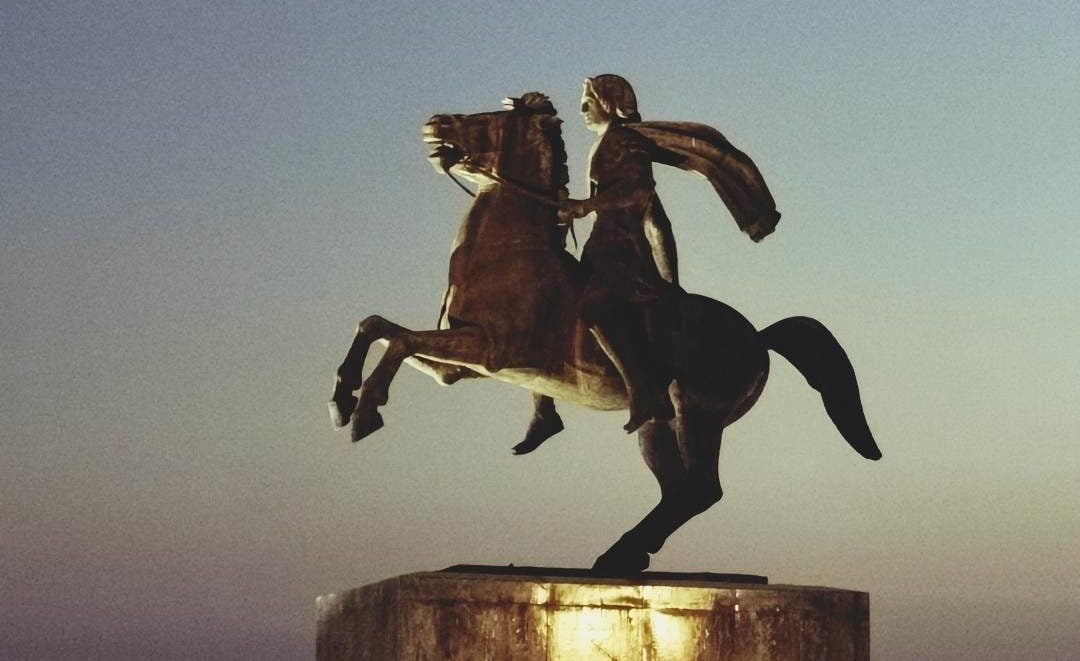
Alexander the Great is well known for his military exploits and expansionist politics, but he is perhaps not as well known for his introduction of certain items, wildlife animals, and practices of India to Europe.
The great leader is known to have traversed and conquered huge expanses of the globe, including modern day Turkey, Syria, Lebanon, Egypt, Iraq, Iran, Afghanistan, and India. With these travels came a curiosity for the cultures of the conquered lands, particularly that of India.
What did Alexander the Great Introduce to Europe From India?
The Alexandrine Parakeet, native to South Asia and Southeast Asia, was named after Alexander the Great, who transported birds from Punjab, India to several European and Mediterranean countries or regions. In Europe, they were revered by royalty and nobility, according to Birdlife International’s Illustrated Checklist of the Birds of the World.

Furthermore, the shrinking number of bananas being found in their countries of origin was made mention of in a UN report. After trying bananas in India, Alexander the Great enjoyed the fruit so much that he just had to share it with the wider world.
According to the report: “It was Alexander’s delectable dessert in 327 BC, during his invasion of India, that led to the fruit’s widespread migration. From India it travelled to the Middle East, where it acquired its current name from the Arabic banan, or finger, and from there Arab traders took it to Africa, where the Portuguese transported it to the Caribbean and Latin America.”
Ancient Greek and Roman records suggest that sugarcane was primarily used as medicine. The ancient Greek historian Arrian once revealed that Nearchus, the admiral of Alexander the Great, already knew about sugarcane in 325 BC. This was because he had accompanied Alexander on his conquests of India.
Arrian had once said that Nearchus wrote: “There is a reed in India that brings forth honey without the help of bees, from which an intoxicating drink is made, though the plant bears no fruit.” As explained in Jean Meyer’s A History of Sugar, Alexander the Great is said to have brought back a small amount of sugarcane from his conquest in India to trade with physicians in Europe.
In the 1st century AD, the Greek physician Pedanius Dioscorides wrote about sugar in his medical treatise De materia medica. Moreover, Pliny the Elder, a 1st century Roman, described sugar in his Natural History. “Sugar is made in Arabia as well, but Indian sugar is better,” he wrote. “It is a kind of honey found in cane, white as gum, and it crunches between the teeth. It comes in lumps the size of a hazelnut. Sugar is used only for medical purposes.”
Cotton is yet another commodity said to have been brought by Alexander the Great from India to Europe. According to Professor Rudi Volti of Pitzer College in California, when Alexander invaded India, his troops began wearing cotton clothes that were much more comfortable than the woolen garments they had previously worn.
The Introduction of Crucifixion
Alexander the Great also introduced some much less pleasant concepts to Europe, including crucifixion. This was, according to the article “The History and Pathology of Crucifixion,” published in the journal National Library of Medicine, “considered one of the most brutal and shameful modes of death.”
The gruesome practice probably originated from the Assyrians and Babylonians. It was likely used systematically by the Persians in the 6th century BC, as well. Based on the journal article, “Alexander the Great brought it…to the eastern Mediterranean countries in the 4th century BC, and the Phoenicians introduced it to Rome in the 3rd century BC.”
See all the latest news from Greece and the world at Greekreporter.com. Contact our newsroom to report an update or send your story, photos and videos. Follow GR on Google News and subscribe here to our daily email!



